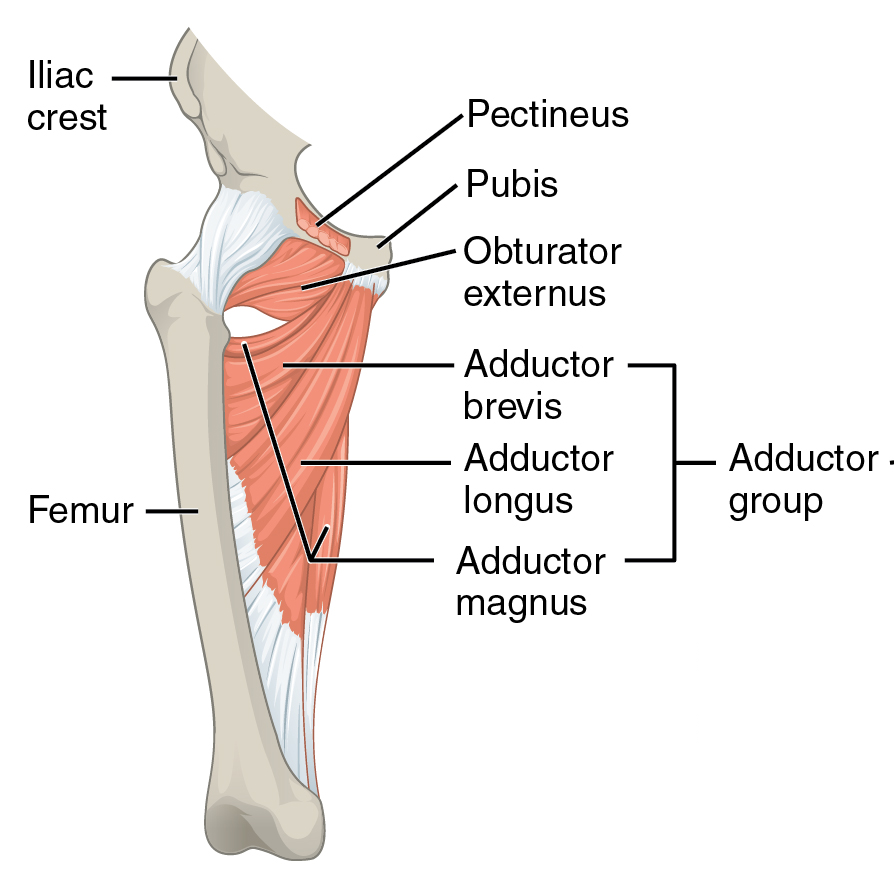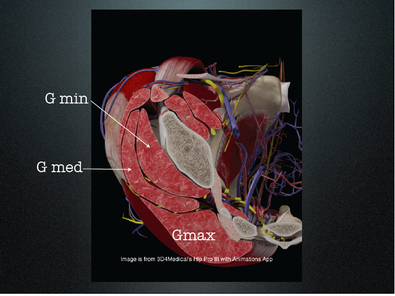The Adductor Magnus
Not just for adduction anymore....
 Ah yes... the adductor magnus. A commonly implicated muscle in hip dysfunction to include CAM lesions, femoroacetabular impingement, anterior femoral glide, as well as "hamstring insertional tendonitis" like symptoms (which would specifically be referring to the long head).
Ah yes... the adductor magnus. A commonly implicated muscle in hip dysfunction to include CAM lesions, femoroacetabular impingement, anterior femoral glide, as well as "hamstring insertional tendonitis" like symptoms (which would specifically be referring to the long head).
You will recall that the adductor magnus consists of . . .
Posted in: adductorclinical examdry needlingdry needling instructionexternalgaithiphip extensionhip flexormagnusneedlingpainrotationrotatorthightpdntrigger point dry needling coursestrigger point dry needling seminars
The Glutes, Part 3
Here is the part you have been waiting for… In case you missed parts one and two, click here and here.
Functional Perspectives
It would logically follow that the gluteus medius is important for generating both forward progression and support, especially during single-limb stance suggesting that walking dynamics are . . .
Posted in: acupunctureclinical examdeep needlingdry needlingexamgaitgluteusgluteus maximusgluteus mediusgluteus minimuslumbarlumbar instabilitymuscle layersneedlingspinal instabilitytpdn
The Glutes, Part 2
Beautiful Glutes: Part 2
We are going to get a little techie here. Hang in there! If you missed part one, click here to go back and read it.
EMG data
There are a paucity of studies on gluteal function during gait, but here is what is out there.
The upper and lower portions of the glute max shows activity at initial . . .
Posted in: acupunctureclinical examdry needlingexamglutegluteus maximusgluteus mediusgluteus minimusmusclemuscle actionmyofascialneedlingtpdn
Rock your clinical exam.
what sensation should you check and why?
What is the most important sensory modality to test and why? Pain? Motor? Sensation?
from Ivo Waerlop on Vimeo.
Posted in: afferentsclinicalclinical examcontinuing educationdiameterdry needlingeducationexamfiberfiberslargelarge diameter afferentsneedlingnerveneurologysensationsensesensorysensory nerve fibersvibrationvibratoryvibratory sense
Counting and Layers
Know where your needle is!

I often say when I am teaching “If you don’t know where your needle is, it probably shouldn’t be there” and “ Know your anatomy!”.
An easy place to get lost at times is in the posterior cervical muscles or anterior compartments of the lower leg and arms. In addition to using an app like . . .
Posted in: acupunctureclinicalclinical examcountingdeepdeep needlingdry needlinglayersmusclemuscle layersneedlingtpdntrigger point dry needling
Needling and Instability
As people who needle, we often emphasize needling the paraspinal muscles associated with the segemental innervation of the peripheral muscle you are needling. For example, you may needle the L2-L4 paraspinals (ie: femoral nerve distribution) along with the quads, or perhaps the C2 PPD’s along with the suboccipitals. We do . . .
Posted in: acupuncturecervicalcervical instabilityclinical examdenervationdry needlingexaminstabilitylumbarlumbar instabilityneedlingneurologyppdspacial summationspinalspinal instabilitysummationtemporaltemporal summationtpdntrigger point dry needling
Cover image credit: http://wallpapershacker.com/skulls_sketches_skeletons_spine_drawings_hd-wallpaper-1015286/
